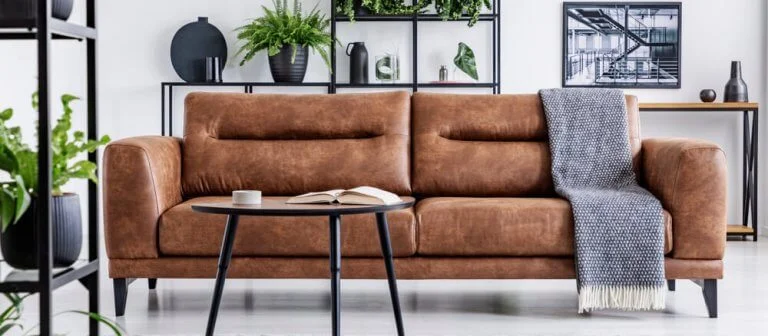Leather furniture remains one of the most favored fabric choices. Available in an array of styles and colors, leather fits beautifully into any decor scheme.
As with any fabric, leather has its own set of advantages and disadvantages; understanding what matters to you will enable a smart purchase decision.
Comfort
Leather furniture is one of the most relaxing materials, offering various choices to meet different lifestyles. Leather quickly warms up in cold temperatures to provide cozy comfort, while its natural fibers soften and become supple as it ages.
Comfort should always come first when purchasing furniture, particularly when there are children or animals living in your home. Children can be especially hard on upholstery pieces so choosing one with a protective coating to reduce staining is ideal.
Frame construction and suspension systems are key components to comfort, so when shopping pay close attention to their components. If you want a piece that will stand the test of time don’t skimp on quality in terms of frame structure.
Durability
Leather furniture can withstand years of use without showing signs of wear and tear, according to several leather furniture retailers. Genuine leather furnishings typically last four or five times longer than fabric furniture.
Durability in leather depends upon its type and quality of hide used; pigmented leather being the most resilient due to a surface coating of polymer-pigment that protects it against fading and soiling.
Aniline leather is soft and expensive, yet can stain and fade over time. A light non-pigment coating may be applied for more natural looking results.
Bonded leather sofas may be an ideal choice for families with both children and pets, as they are less likely to be damaged by claws and paws. However, due to increased spill damage risk compared with genuine leather furniture, bonded leather pieces should be cleaned immediately in the event of accidents.
Appearance
Leather is an exquisite material that adds a sophisticated air to any room, while being less vulnerable to fading and damage than fabric upholstery.
Leather furniture is hypoallergenic, making it an excellent choice for people with asthma or allergies and families with children, as it won’t trap dirt or dust. Spills and stains can easily be cleaned with wipes and a cleaner; use leather conditioner to maintain its appearance over time.
If you want an authentic piece, full-grain leather may be your answer. This expensive type of material preserves its natural aesthetic while retaining all the charm of animal skin.
Other key indicators of genuine leather include scars and scratches as well as grainy or rough appearance. Furthermore, look out for any “fat wrinkles,” caused by fat deposits formed while an animal was alive – these can be an indicator that your sofa is genuine leather.
Maintenance
Leather requires more maintenance than fabric, but with proper care it can outlive many other materials and stay looking brand new for much longer. Keep your leather furniture looking its best by giving it some love and TLC.
Leather furniture requires regular care and upkeep just like any other piece in the home, including regular vacuuming and wiping down with light soapy water to avoid stain formation. Regular vacuuming and wiping down will prevent stains from developing on its surface.
Accidental spills on leather sofas and chairs aren’t an unusual occurrence with children or pets around, so when they do occur it’s best to quickly wipe up any liquid with a dry cloth to stop further damage from accumulating.
Most leather stains will fade within hours. If they persist, however, a stain removal solution might be in order. Alcohol can damage leather; instead try mixing lemon juice and cream of tartar for best results; this combination should remove dark-colored spots without over-saturating it with cleaner.




